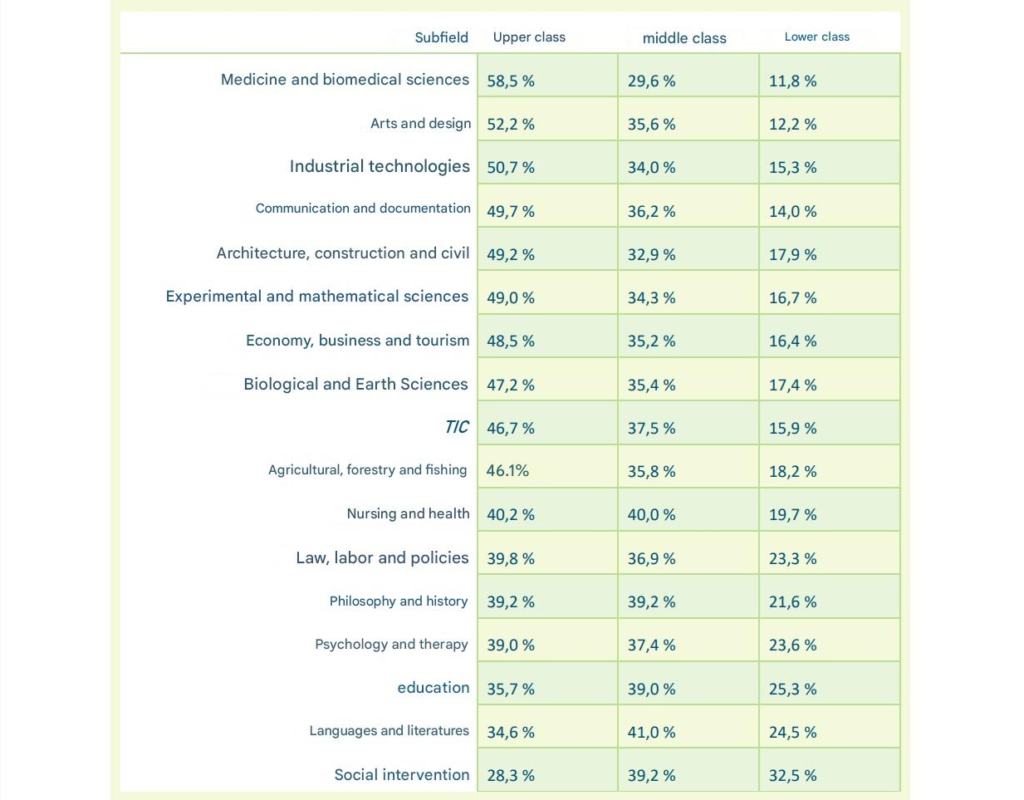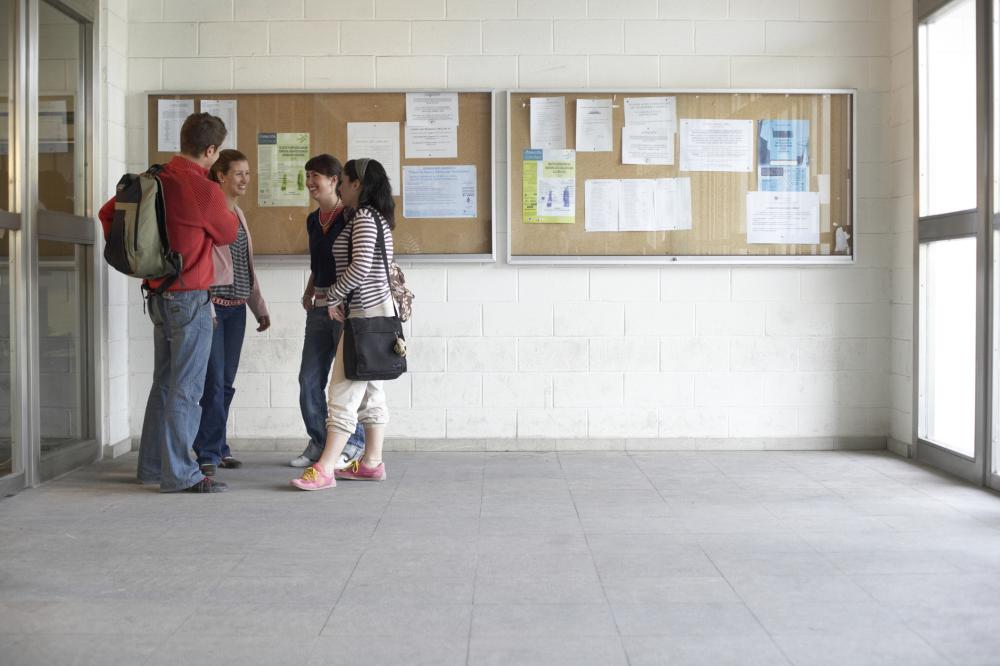The report, based on data from Catalonia, points out that medicine and the arts have more upper-class graduates than education and languages and literature.
A study by the Catalan University Quality Assurance Agency (AQU) shows that the majority of medical students come from upper class backgrounds, while degrees such as Education and Languages and Literature have more middle- and lower-class students. This is what is known as ‘horizontal stratification’ in the university system, where there is a tendency for lower income groups to enrol in courses with more moderate labour market outcomes and lower cut-off marks.
For example, according to the report Equity in labour market insertion and social mobility of graduates from Catalan face-to-face universities by AQU Catalunya, 58.5% of graduates in medicine and biomedical sciences come from the upper class, 30% from the middle class and 12% from the lower class.

In Arts and Design, 52% are students from families with more resources and 12% from a lower class, while in Industrial Technologies the figures are 51% and 15% respectively.
On the other hand, in Education, 36% of graduates come from the upper class and 25% from the lower class. In Languages and Literature, the figures are 35% and 25% respectively, while in Social Work there would be a more balanced ratio.
The president of AQU Catalunya, Francesc Xavier Grau, said at the press conference where the study was presented that there is a “social stratification” because there are differences between degrees in terms of social prestige.

This is reflected in salaries: according to the 2023 data, graduates from higher social classes earn up to €206 more per month on average, to €2,464, compared to €2,257 for graduates from lower social classes. The study is based on a survey of 21,000 graduates from public and private universities to analyse differences in employability three years after graduation.
Non-metropolitan centres are more equitable
The same data show that public centres in Barcelona and its metropolitan area tend to have a lower percentage of upper-class students than private centres in the same geographical area. On the other hand, non-metropolitan centres, regardless of their ownership, have a more equitable distribution of graduates.
The analysis explains that universities outside the metropolitan area of Barcelona are the most favourable to social mobility. The relevant data show that the sub-area of social intervention in non-metropolitan public universities is the one with a graduate population from less privileged backgrounds. On the contrary, 8 out of 10 graduates in medicine and biomedical sciences from a private and metropolitan university come from the upper classes.
Master’s degrees have increased by 26% in five years
Catalonia has also seen changes in university provision over the last five academic years, as the population has grown by 3% over this period. The largest increase has been in the number of master’s degrees, which has risen by 26%, particularly in the fields of engineering, architecture, social sciences and law. In addition, 67% of master’s programmes are fully or partly taught in English, which promotes cultural diversity and academic mobility.
In contrast, the number of undergraduate places has increased by only 0.6%, mainly in engineering and architecture.
We can also see that the university plays an important role as a social ladder for those who manage to gain access to it: the link between the employment of parents and that of graduates is weaker than that of the population in general. A group of degrees has been identified that particularly help graduates to be socially mobile: degrees in Social Intervention, Education and Languages and Literature from public universities outside the Barcelona metropolitan area.



